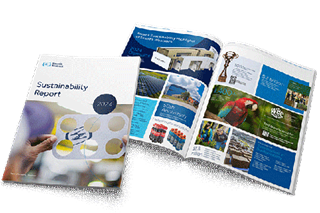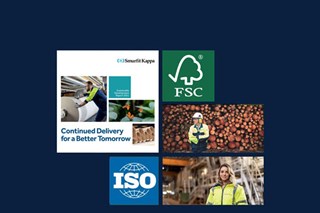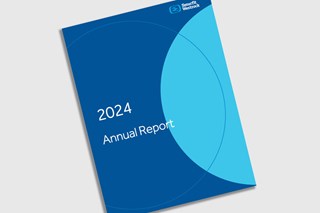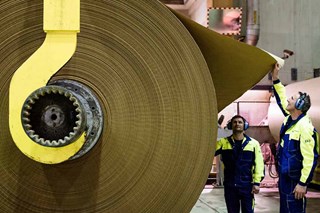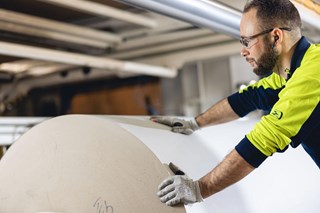Ways to Make Your Luxury Packaging More Sustainable
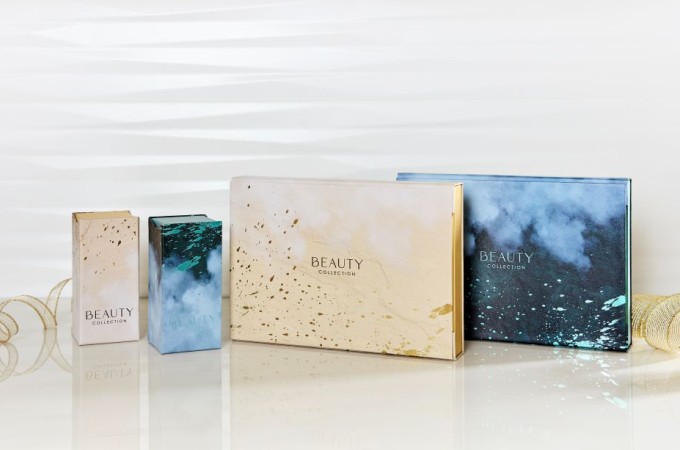
Burberry is one of the many luxury brands that have taken on a mission to achieve greater circularity. According to Victoria Brownlie, the chief of Policy and Sustainability at the British Beauty Council, luxury brands are the fourth largest contributor of plastic packaging waste.
With high customer demand for sustainability and evolving regulations designed to curb packaging waste, there’s much luxury brands can do to lessen any negative impacts of their packaging. Our luxury packaging designers often field requests to improve packaging circularity and lessen related emissions and environmental impact.
Here are some of their recommendations:
1. Pick the right packaging substrate.
Use recyclable paper substrates. If your packaging includes materials that can’t be recycled, there’s a simple way to boost sustainability: use recyclable alternatives. One great example is limiting or ditching single-use plastic and opting instead for materials like paper, glass or metal that are easier to recycle.Our luxury packaging designers say the number-one request they get when it comes to sustainability is eliminating the use of plastic packaging. We’ve helped many customers take plastic out of their packaging by introducing paper-based solutions, and they’re often amazed by the quality and look that can be achieved with paper-based products.
“If someone comes to us and says we want this to be as sustainable as possible, we'll explain the materials they can use and the ones they can't use in the design,” said Mark Campbell, senior design project manager for Smurfit Westrock. “We used to have a thousand materials we could use, and now, if they want something totally sustainable, we’re down to only a few. So, that limits your options, but it can easily be done.”
Use a lighter weight. Already using paper-based packaging? You can step it up a notch by using less of it. Thanks to advancements in paperboard technology, it’s possible to use paperboard with a lighter weight while keeping your products well-protected. Our design team at Smurfit Westrock is well-versed in the strengths of different paper weights and can test designs to ensure a lighter weight can be used with no structural issues.
2. Redesign packaging for sustainability.
Design for end of life. Sometimes making a package more sustainable involves more than switching the substrate; it requires a complete redesign. Our designers are so used to designing for sustainability that when they start a new design, they always have the package’s end of life in mind.
Once a package is opened by the consumer, where is it going and how can it be made to be recycled or repurposed easily? How can we encourage consumers to recycle or repurpose the packaging?
Brands creating luxury packaging as presentation pieces meant to be kept might be less concerned about sustainability since it’s meant to have a lengthy life.
“Some people look at the package they're building, and if it's a box set for a movie or if it's a high-end liquor where you’re building a package that nobody throws away, then the sustainability factor isn’t as important to them,” said Dan Davis, packaging design director for Smurfit Westrock.
Use a single material. But for those wanting to be more sustainable, one way to redesign the packaging is to create designs that eliminate other materials besides the main substrate, materials like wood, leather or metal and magnets. When a package is more than a single material, it may be harder to recycle. Our designers say luxury boxes with metal closures are extremely popular, but there are ways designers can eliminate the metal and magnet by creating an extra flap to tuck.
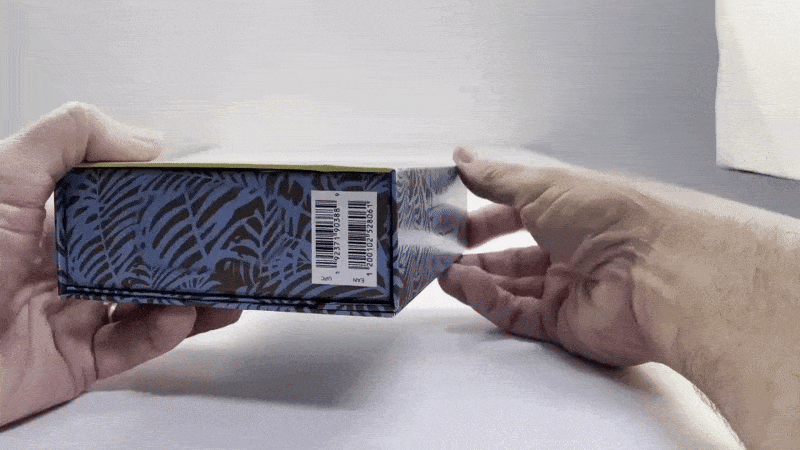
“This is one of those options we use the most. The extra flap tucks in, and it's not coming out,” said Davis. “You get the same look as it had with the magnet, but now it’s all paper without that magnet component.”
Use less fiber in the new design. With a redesign, you can also reduce the amount of fiber used in the packaging or design it to produce less waste during the manufacturing process. Additionally, redesigning a package so it’s more compact and doesn’t contain as much “air” can help reduce shipping costs and emissions. The more product you can fit on a pallet or in a container, the more you can ship at one time.
To really understand how much of a difference design changes can make, our team often conducts life cycle analyses. These studies dig deep into a design’s impact on things like carbon emissions, energy and water usage and shipping costs, as well as recyclability.
3. Use more sustainable protective packaging.
Use corrugate or molded fiber. When trying to reduce plastic packaging for our customers, we include eliminating plastic used for internal protective packaging. To protect delicate products, the go-to material in years past has been foam or plastic trays. But as brands ask for greater sustainability, corrugate and molded fiber inserts are becoming the go-to for our designers.
“There was a learning curve in the beginning, but we can use corrugate in the same way we used foam, and it protects the product just as well,” said Campbell.
Our designers put corrugate to the test when designing new packaging for a shower attachment. The brand wanted the packaging for their device to be completely sustainable, but it also needed to protect the product from dents and scratches and keep it in place during transport. The challenges for the designers were the weight of the product and the uneven distribution of the weight.
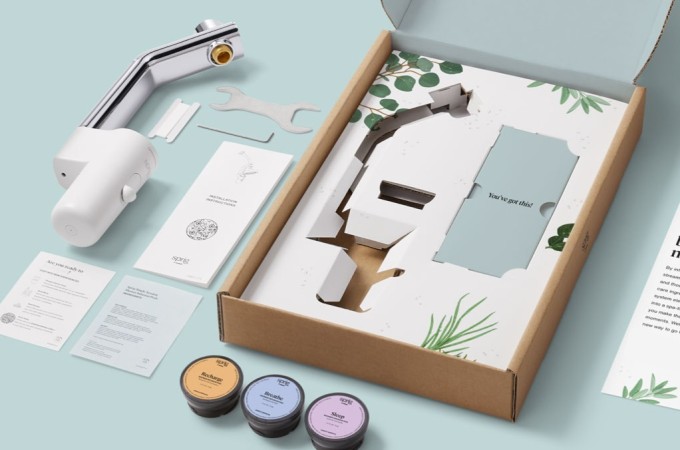
“At the end we had some pretty extensive ship testing to see how it would do, if it would break down, if it would get a crimp in one corner, or if some piece would move around a little bit too much,” said Davis.
To make sure the sustainable design was durable enough, Davis and Campbell shipped the product in its new packaging across the country twice.
Test your new protective packaging. Our teams go through extensive testing to make sure the packaging will get through the whole packaging supply chain and all the way to the customer without being damaged. “Real-world testing” like drop tests, ship tests, or supply chain tests provide a look into how the packaging will perform and give designers an understanding of whether their design is ready.
4. Use sustainable inks and decorative inks.
Print with water-based inks. When Gucci decided to make their packaging completely sustainable, the brand even made sure the inks used to print on their paperboard were sustainable. Water-based inks produce less VOC’s (volatile organic compounds) during the printing process; VOC emissions can contribute to air pollution. Water-based inks are also water-soluble, making them much easier to clean up.
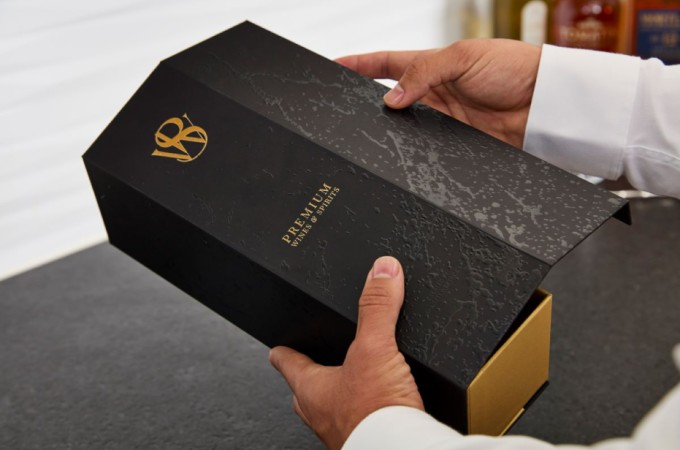
Choose sustainable decorative printing. Luxury packaging often makes use of decorative printing, involving different techniques to create effects like embossing or metallized prints that used to be made with plastic only. Therefore, some decorative printing inks can prevent a package from being recycled, but recent developments have created many sustainable options, which means it’s now possible to create a premium-looking print while maintaining recyclability, if you so choose.
5. Use sustainable shipping materials.
Eliminate single-use plastics from shipping too. To protect packaging during shipping, brands typically used plastic poly bags or a poly liner to protect from scuffs or scrapes. In their quest to eliminate plastic from the supply chain, our designers said that some have switched to using slips of paper.
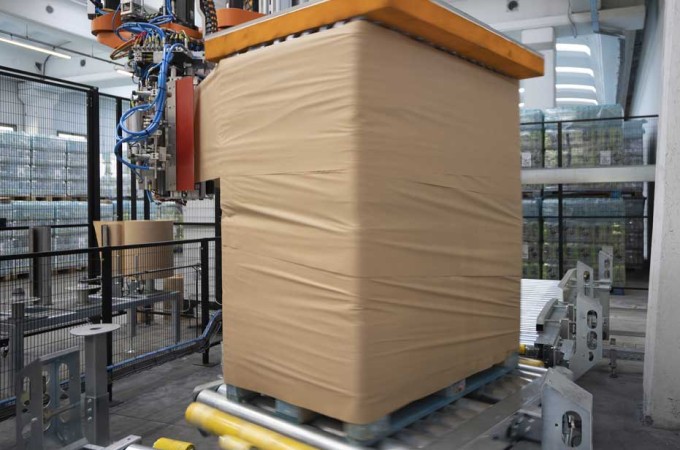
In other industries, those who’ve typically had to wrap product on pallets with plastic stretch wrap are also turning to paper, which is quickly becoming a new sustainable standard in some regions. In Europe, Glass container company Encirc recently adopted Smurfit Westrock’s paper pallet wrap.
Making your luxury packaging more sustainable is all about getting the most out of recyclable materials and understanding how to achieve that premium look with greater limitations. Designers like ours who are experienced in doing this can provide you with multiple options that strike the perfect balance between high quality and sustainability. Contact us to get started on your new, more sustainable package design.
Our Latest Blogs









